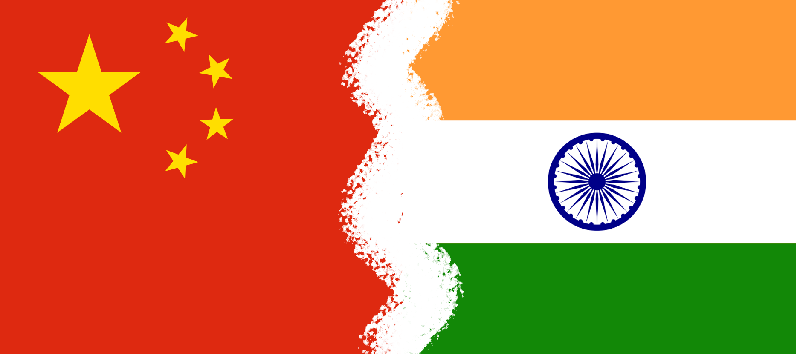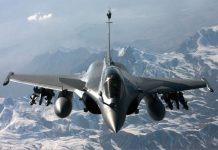As India gets ready for the first-ever QUAD summit scheduled for Friday, the Modi government may have to make a tough choice between the US-led anti-China bloc and the BRICS grouping.
For the first time since its inception, the leaders of the QUAD group of countries are getting together to hold a virtual summit on March 12, 2021. Being organized by the US, the Summit will also give an opportunity to the Indian Prime Minister Narendra Modi to interact with the new US president Joe Biden for the first time.
According to a statement, the QUAD countries – the US, Australia, India, and Japan – will focus on global and regional issues of shared interest and discuss cooperation on maintaining a free and inclusive Indo-Pacific. The issue of challenges on resilient supply chains, emerging and critical technologies, maritime security, and climate change will also remain high on the agenda.
Importantly, the US administration intends to announce “financing agreements to support an increase in manufacturing capacity for coronavirus vaccines in India,” Reuters quoted a senior US administration official as saying. The financing will focus on “companies and institutions in India manufacturing vaccines for American drugmakers Novavax Inc and Johnson & Johnson,” the report added.
The summit is expected to evolve a joint commitment on enhanced vaccine production to address the COVID-19 challenge. Besides the QUAD countries, the aim will be to accelerate vaccination campaigns in Southeast Asian countries, according to the Reuters report.
#THREAD 1: Some maps of the #IndoPacific:
A) #IndoPacific & #AsiaPacific regions
B) EEZ zones & 9 Dash line claims in the #SouthChinaSea
C) Spratly Islands outposts, facilities & runways
D) First & Second island chains, the 2 defensive maritime lines to contain #China pic.twitter.com/7Oj9DAQnWT
— Indo-Pacific News – Watching the CCP-China Threat (@IndoPac_Info) May 4, 2020
In addition, the QUAD meeting on Friday is likely to focus on the emerging threat of Chinese expansionism. All the members of the group have suffered the consequences of China’s aggressive posture, on both military and commercial fronts, with particularly India, in its crosshairs.
In fact, the QUAD was conceived to increase the naval capability and cooperation between member states against China, but the agenda is expected to significantly expand during this summit. India is expected to decide during the summit whether it wants to continue the confrontation with China or talk about improving relations with it. India is also considered an indispensable member of the QUAD, whose effectiveness will depend a lot on how far the country is prepared to go against China.
Interestingly, India is a member of another significant bloc — BRICS — in which ironically, China plays an incremental role. Apart from India and China, Russia, Brazil, and South Africa are also members of the BRICS forum. To add to Modi’s dilemma, China last month said it supported India’s chairmanship of the BRICS summit this year, a platform where India could hope to de-escalate border tensions with the former.

To become a member of an anti-China military alliance while remaining a part of an important bloc involving China, India finds itself in a difficult situation where it may be forced to choose its side. Now that it has gone too far with the US by signing the BECA agreement, which essentially meant that India was militarily aligning with the country, New Delhi will have something to lose whichever bloc it chooses to stand with, the experts say.
How Prime Minister Modi pulls the country out of this predicament will be interesting to watch, although the experts strongly suggest his future strategy will be to ease tensions with China, as has been suggested by the events of the last few months, which witnessed de-escalation at the border and the green signal to the Chinese investments in India last week.
Established 15 years ago, when India and China enjoyed relatively better relations, the BRICS nations are expected to dominate the economy by 2050. Being the world’s fastest-growing nations, the BRICS dream represents the rise of a new Asia, supposed to replace the West as the global center of power. The leaders from BRICS nations regularly attended summits together, taking unanimous decisions on critical issues that benefited each member country.
However, that spirit was undermined after last year’s confrontation between the main member nations of the BRICS bloc, India and China. New Delhi forging a military alliance with Washington made matters worse, with India abdicating its tremendous trade ties with China. The US, Australia, and Japan also saw their relations deteriorating with China.
Being the neighbor of China, and sharing a border of 4,500 km with the country, India will have to tread carefully, and it’s no surprise it’s sailing in both boats, aspiring for a role in both BRICS and QUAD camp. Experts, however, caution that this will be a precarious choice for Modi and it will be interesting to see how he manages to counterbalance China.
BBC quotes sources in the Indian Ministry of External Affairs as saying there is no question of deteriorating the balance in India’s involvement in both the QUAD and BRICS, adding that India would want to sit “on a high table” on every international stage.
Prime Minister Modi has been emphatic about his stand from the beginning about India playing an incremental role in global affairs. However, how he positions India in both BRICS and the QUAD grouping will be the real test of his statesmanship, experts argue.




